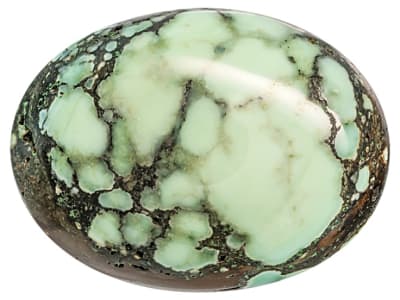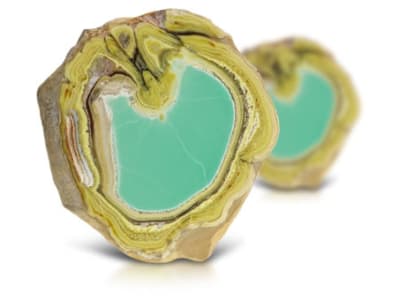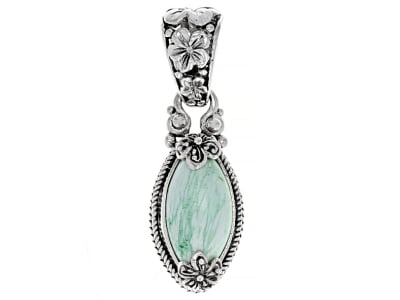Variscite is a phosphate mineral that is translucent to opaque with green to bluish green coloring that is often mottled or veined. This gem is commonly cut en cabochon or used for carvings. With a similar appearance to green turquoise, variscite is named for its location of first discovery in Germany. When mined in Utah, some prefer to call it Utahlite.
General Information
Common Name
Variscite
Species
Variscite
Transparency
Translucent - Opaque
Refractive Index
1.560-1.590
Tolerance:(+0.003/-0.006)
Tolerance:(+0.003/-0.006)
Birefringence
0.031
Optic Character
Biaxial
Optic Sign
Negative
Polariscope Reaction
Aggregate (AGG), Doubly Refractive (DR)
Fluorescence
SWUV: Inert to weak green
LWUV: Inert to weak green
LWUV: Inert to weak green
CCF Reaction
pinkish to red
Pleochroism
None
Hardness
3.5-5
Streak
White
Specific Gravity
2.400-2.600 Typical:2.500
Toughness
Poor
Inclusions
Variscite mottled in appearance with yellow to brown matrix. Material from Utah is lime green and has a swirled appearance.
Luster
Vitreous, Waxy
Fracture
Granular, Uneven
Cleavage
None
Chemical Name
hydrous aluminum phosphate
Chemical Formula
AlPO4.2H2O
Crystal System
Orthorhombic
Chemistry Classification
Phosphate
Variscite Colors
-
 Green
Green -
 Yellow
Yellow
Alternate Names
Utahlite, Amatrice, Sabalite, Trainite Or Chol-Utahlite
Countries of Origin
Unknown; China; United States of America; Brazil; Australia
Care
Untreated material normal, gentle handling. Variscite is a soft stone, so be mindful of scratching. Stabilized and dyed material avoid temperature changes, heat, steaming, chemicals, and ultrasonic cleaners.


